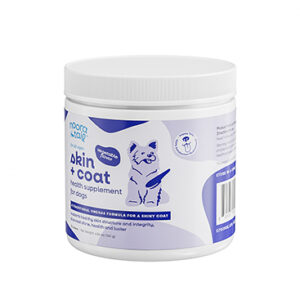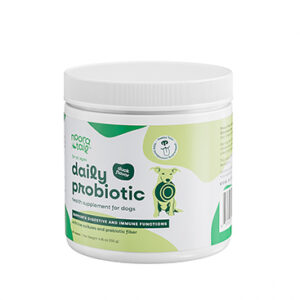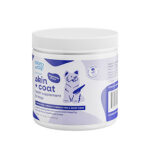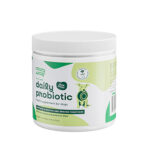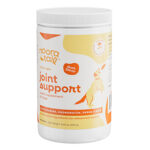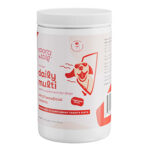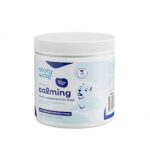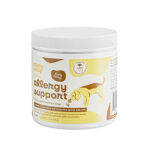I. Introduction

I. Introduction
As a dog pet blogger, I often encounter questions from concerned pet owners about various skin conditions affecting their furry companions. One common issue that warrants prompt attention is the presence of scabs on a dog’s body. Scabs are crusty lesions formed when the skin heals over a wound or irritation. While scabs may seem harmless at first, they can indicate underlying health issues that require professional veterinary care.
II. Causes of Scabs on Dogs
The presence of scabs on a dog’s body can have multiple causes, including:
- Trauma: Injuries from bites, cuts, or scrapes can cause scabs to form.
- Allergies: Allergic reactions to environmental triggers, food, or parasites can manifest as scabbed skin.
- Skin infections: Bacterial or fungal infections can cause skin lesions that scab over.
- Parasites: Mites, fleas, and ticks can cause intense itching and scabbing.
- Autoimmune diseases: Conditions like pemphigus foliaceus cause the immune system to attack the skin, leading to blistering and scabbing.
III. Importance of Prompt Diagnosis
It is crucial to seek veterinary attention as soon as you notice scabs on your dog’s body. The underlying cause may not be immediately apparent, and prompt diagnosis is essential for effective treatment. A timely visit to the veterinarian allows for:
- Identification of the root cause: The veterinarian will conduct a thorough examination to determine the underlying cause of the scabbing.
- Appropriate treatment: Depending on the diagnosis, the veterinarian will prescribe medications, antibiotics, or other therapies to address the condition.
- Prevention of complications: Untreated scabs can become infected or lead to more serious skin problems. Prompt treatment helps prevent further complications.
IV. Treatment Options
The treatment for scabs on dogs will depend on the underlying cause. Some common treatment options include:
- Antibiotics: For bacterial infections
- Antifungals: For fungal infections
- Antihistamines: For allergic reactions
- Parasiticides: For parasite infestations
- Immunosuppressive medications: For autoimmune diseases
- Wound care: To clean and protect scabs from infection
V. Home Care Tips
In addition to veterinary care, there are some home care tips you can follow to support your dog’s recovery:
- Keep the scabs clean: Gently clean the scabs with a warm, damp washcloth to prevent infection.
- Apply a cold compress: A cold compress can help reduce inflammation and itching.
- Avoid scratching: Encourage your dog to avoid scratching the scabs as this can worsen the condition.
- Provide a comfortable environment: Keep your dog in a cool, shaded area to minimize discomfort and itching.
VI. Conclusion
Scabs on a dog’s body are a common but potentially serious condition. It is crucial to seek veterinary attention promptly to identify the underlying cause and ensure appropriate treatment. By being vigilant and providing timely care, you can help your furry companion regain healthy, scab-free skin. Remember, a prompt diagnosis and treatment are essential to prevent complications and ensure a positive outcome for your beloved dog.
II. Potential Causes

As a devoted dog lover, it can be alarming to discover your furry companion covered in scabs. These unsightly lesions can indicate a range of underlying medical issues, requiring prompt attention to ensure your dog’s comfort and well-being. In this article, we will explore the potential causes of scabs on your dog’s body and provide insights into appropriate remedies.
Understanding the Causes: A Diagnostic Journey
Uncovering the root cause of scabs on your dog’s body is crucial for effective treatment. Here are some of the most common culprits:
A. Parasites
Parasitic infestations can lead to intense itching and scratching, causing skin damage that results in scabs. Fleas, ticks, and mites are notorious for triggering these reactions. Regular parasite prevention measures, such as flea and tick treatments, are vital to prevent and eliminate infestations.
B. Allergies
Environmental and food allergies can provoke inflammatory responses in dogs, leading to itchy skin and scabs. Identifying the allergens responsible for these reactions requires careful observation and veterinary testing. Once the allergens are determined, avoiding exposure and using allergy-specific medications can alleviate symptoms.
C. Skin Infections
Bacterial and fungal skin infections can cause inflammation, scabbing, and hair loss. These infections often develop due to underlying skin conditions, such as allergies or parasites. Antibiotics or antifungal medications, prescribed by a veterinarian, are typically necessary to clear the infection.
D. Other Causes
In some cases, scabs on dogs can be attributed to other factors, such as:
- Autoimmune diseases: These conditions occur when the body’s immune system attacks its own cells, leading to skin lesions.
- Hormonal imbalances: Certain hormonal disorders can cause skin problems, including scabs.
- Metabolic disorders: Conditions like Cushing’s disease can affect the skin’s health, resulting in scabs.
Seeking Professional Guidance
If your dog develops scabs on its body, it’s imperative to seek veterinary attention promptly. The veterinarian will conduct a thorough examination to determine the underlying cause and recommend appropriate treatment options. Delaying veterinary care can worsen the condition and compromise your dog’s comfort.
Home Care and Preventive Measures
While veterinary intervention is essential, you can also implement home care strategies to support your dog’s recovery and prevent future outbreaks:
- Keep your dog clean: Bathing your dog regularly with a gentle shampoo can remove allergens, parasites, and infection-causing bacteria.
- Moisturize your dog’s skin: Using a hypoallergenic moisturizer can soothe irritated skin and promote healing.
- Protect your dog’s skin: Avoid exposing your dog to harsh chemicals or irritants that can further aggravate the skin.
- Manage your dog’s allergies: If your dog has been diagnosed with allergies, take steps to eliminate or minimize exposure to the allergens.
- Maintain a healthy diet: A nutritious diet supports your dog’s immune system and overall skin health.
- Regular veterinary checkups: Routine veterinary exams allow for early detection and treatment of skin issues, preventing scabs and other complications.
Conclusion
Scabs on dogs can be indicative of various medical conditions, ranging from parasites to allergies and skin infections. Prompt veterinary attention is essential to accurately diagnose the underlying cause and initiate appropriate treatment. By implementing home care strategies and preventive measures, you can support your dog’s recovery and maintain their skin’s health and comfort. Remember, a healthy dog is a happy dog, and your furry companion deserves the best possible care to thrive.
III. Symptoms

Introduction:
Scabs, also known as crusts, are a common skin condition in dogs that can be caused by various underlying issues. Recognizing the symptoms and seeking prompt veterinary attention is crucial for effective treatment and preventing further discomfort for your furry companion.
Symptoms:
A. Scabs and Crusts on the Skin:
The presence of scabs or crusts on your dog’s skin is the most evident symptom. These scabs can vary in size, shape, and consistency, depending on the underlying cause.
B. Itching and Scratching:
Dogs with scabs often experience intense itching and scratching, which can further irritate the affected areas and worsen the condition.
C. Redness and Inflammation:
The skin surrounding the scabs is typically red and inflamed, indicating underlying irritation and infection.
D. Hair Loss:
In some cases, scabs and crusts can lead to hair loss in the affected areas.
E. Lethargy and Decreased Appetite:
In severe cases, scabs and crusts can cause discomfort and lethargy, as well as a loss of appetite.
Causes:
1. Skin Infections:
Bacterial or fungal infections can cause scabs and crusts to form on your dog’s skin. These infections can be caused by contact with contaminated environments, other animals, or underlying skin conditions.
2. Allergies:
Allergies to food, environmental allergens, or parasites can trigger skin irritation and the formation of scabs.
3. Parasites:
Parasites such as fleas, ticks, and mites can cause itching and irritation, leading to scabs and crusts.
4. Autoimmune Disorders:
Certain autoimmune disorders can cause the immune system to attack the dog’s own skin cells, resulting in scabs and inflammation.
5. Skin Trauma:
Minor wounds or cuts can become infected and form scabs as they heal.
6. Environmental Irritants:
Exposure to harsh chemicals, plants, or other irritants can cause skin irritation and the development of scabs.
Treatment:
The treatment for scabs on your dog’s skin depends on the underlying cause. Veterinary examination and diagnosis are essential for determining the appropriate course of action.
1. Topical Treatments:
Antibacterial or antifungal creams, ointments, or shampoos may be prescribed to treat skin infections. Anti-itch creams or medications can provide relief from itching.
2. Oral Medications:
Antibiotics, antifungals, or antiparasitic medications may be prescribed to eliminate underlying infections or parasites.
3. Diet Changes:
If allergies are suspected, the veterinarian may recommend eliminating potential allergens from your dog’s diet.
4. Immunosuppressants:
In cases of autoimmune disorders, immunosuppressant medications may be prescribed to suppress the immune system and reduce inflammation.
5. Wound Care:
For scabs caused by wounds or trauma, proper wound cleaning and bandaging may be necessary to promote healing.
Prevention:
1. Regular Veterinary Checkups:
Regular veterinary checkups can help identify and address any underlying skin issues that could potentially lead to scabs.
2. Parasite Control:
Keeping your dog up-to-date on flea, tick, and heartworm prevention can minimize the risk of parasitic infestations that can cause scabs.
3. Avoid Allergens:
If your dog has allergies, identifying and avoiding potential allergens can prevent skin irritation and the development of scabs.
4. Good Hygiene:
Regular bathing and grooming can help keep your dog’s skin clean and free from irritants.
Conclusion:
Scabs on a dog’s skin can be a sign of various underlying health issues. It is important to seek veterinary attention promptly to determine the cause and initiate appropriate treatment. By understanding the symptoms and causes of scabs, and implementing preventive measures, you can help keep your dog’s skin healthy and comfortable.
IV. Diagnostic Tests

When your beloved canine companion develops scabs all over its body, it can be an alarming sight. To determine the underlying cause and provide appropriate treatment, a thorough diagnostic evaluation is crucial. Here are the key tests that veterinarians commonly employ:
A. Physical Examination
- Visual inspection: The veterinarian will meticulously examine your dog’s skin, noting the location, size, color, and distribution of the scabs.
- Palpation: The veterinarian will gently feel the scabs and surrounding skin to assess their texture, thickness, and any signs of pain or discomfort.
- Medical history: The veterinarian will inquire about your dog’s overall health, any recent injuries or medications, and any changes in behavior or environment that may be relevant.
B. Skin Scraping
- Collection: Using a scalpel or other sharp instrument, the veterinarian will scrape a few scabs and the underlying skin to collect samples.
- Microscopic examination: The scrapings are examined under a microscope to identify any parasites, bacteria, or fungi that may be present. This test can help rule out conditions such as scabies, ringworm, or bacterial infections.
C. Blood Tests
- Chemistry panel: This blood test evaluates your dog’s organ function and can detect underlying health conditions that may contribute to the scabbing, such as liver or kidney disease.
- Complete blood count: This test measures the number and types of blood cells, which can reveal anemia, inflammation, or other abnormalities that may be related to the scabs.
- Allergy testing: If your veterinarian suspects an allergic reaction, blood tests can be performed to identify specific allergens that your dog may be reacting to.
D. Other Diagnostic Tests
Depending on the results of the initial tests and the veterinarian’s clinical judgment, additional diagnostic procedures may be necessary, such as:
- Biopsy: A small sample of the skin, including scabs, is taken for microscopic examination to determine the underlying cause.
- Fungal culture: A sample of the scabs is sent to a laboratory for incubation and identification of any fungal organisms.
- Parasite examination: Blood or fecal samples are tested for parasites that may be causing the skin irritation.
V. Conclusion
Diagnosing the cause of scabs on a dog’s body requires a comprehensive approach involving physical examination, skin scraping, blood tests, and potentially other diagnostic procedures. By carefully evaluating the results of these tests, veterinarians can determine the underlying medical condition and prescribe appropriate treatment to restore your dog’s skin health and well-being.
V. Treatment Options

As a loving dog owner, you want nothing but the best for your furry companion. When you notice scabs forming on your dog’s body, it can be alarming and concerning. While scabs can be a common occurrence in dogs, understanding the underlying cause and seeking appropriate treatment is crucial to ensure your dog’s well-being.
Causes of Scabs on Dogs
Scabs, also known as crusts, are a response to skin damage in dogs. They form when the body sends proteins and cells to repair injured or irritated skin. Some common causes of scabs in dogs include:
- Allergies: Environmental allergens, such as pollen, dust mites, or certain foods, can trigger allergic reactions that lead to itchy skin and scab formation.
- Parasites: Fleas, ticks, and mites can bite and irritate your dog’s skin, causing intense scratching and scabs.
- Bacterial infections: Skin infections, such as pyoderma or hot spots, can manifest as red, inflamed skin with scabs.
- Fungal infections: Ringworm or other fungal infections can cause itchy lesions that develop scabs.
- Skin trauma: Cuts, scrapes, or wounds can also result in scab formation as the skin heals.
Treatment Options for Scabs on Dogs
The treatment for scabs on dogs depends on the underlying cause. Your veterinarian will perform a thorough examination and diagnostic tests, such as skin scrapings or biopsies, to determine the best course of action.
A. Antiparasitic Medications
If parasites are the culprit, your veterinarian will prescribe antiparasitic medications in the form of topical treatments, oral tablets, or shampoos. These medications kill or repel pests to alleviate irritation and allow the skin to heal.
B. Antihistamines
For dogs suffering from allergies, antihistamines can help block the histamine response, reducing itching and inflammation. Your veterinarian may prescribe oral antihistamines or recommend topical anti-itch creams.
C. Antibiotics
Antibiotics are prescribed to treat bacterial infections that are causing scabs. They work by killing the bacteria responsible for the infection and promoting skin healing.
D. Topical Therapies
In addition to systemic medications, topical therapies can provide soothing relief and promote skin repair. Over-the-counter or prescription shampoos and ointments containing antiseptic, antifungal, or anti-inflammatory ingredients can help clean and protect the affected skin.
E. Home Care
Along with medical treatment, there are some home care measures you can take to support your dog’s healing:
- Keep your dog’s environment clean and free of allergens.
- Regularly groom your dog to remove loose hair and potential irritants.
- Use a humidifier to add moisture to the air, which can help reduce dry, itchy skin.
- Avoid bathing your dog too frequently, as it can remove essential oils from the skin.
Importance of Veterinary Care
It’s essential to seek veterinary care as soon as you notice scabs on your dog’s body. Prompt diagnosis and treatment can prevent infections from worsening and ensure your dog’s comfort and well-being. Remember, scabs are often a symptom of an underlying issue, and addressing the root cause is crucial for long-term skin health.
By working closely with your veterinarian, you can help your dog overcome the discomfort and irritation caused by scabs and restore their skin to its optimal condition.
VI. Prevention
If your dog has scabs all over its body, it’s essential to first determine the underlying cause. Common causes of scabs in dogs include allergies, parasites like fleas or ticks, and skin infections. Once the cause is identified, appropriate treatment can be provided to alleviate the symptoms and prevent future outbreaks.
In addition to the underlying treatment, there are several preventative measures that can be taken to reduce the likelihood of your dog developing scabs or other skin problems:
VI. Prevention
A. Regular Grooming
- Regular grooming helps remove dirt, debris, and loose hair from your dog’s coat, preventing them from becoming trapped and irritating the skin. It also allows you to inspect your dog’s skin for any signs of irritation or infection.
- Brush your dog’s coat thoroughly several times a week to remove dead hair and prevent mats. Depending on your dog’s breed, you may need to bathe them monthly or more frequently.
- Choose a shampoo specifically formulated for dogs and avoid using human products, as these can be harsh and drying.
B. Use of Flea and Tick Preventatives
- Fleas and ticks can cause skin irritation and scabs, especially if your dog is allergic to their bites. It’s crucial to use flea and tick preventatives year-round, even if you don’t see any pests on your dog.
- There are several types of flea and tick preventatives available, including topical (applied to the skin), oral (given by mouth), and collars. Consult with your veterinarian to determine the best option for your dog.
C. Avoiding Allergens
- If your dog has allergies, identifying and avoiding the allergens is essential for preventing scabs. Common allergens include food ingredients, environmental factors (e.g., pollen, grass), and household chemicals.
- Work with your veterinarian to conduct allergy testing to determine the specific allergens that affect your dog. Once identified, avoid exposure to these triggers as much as possible.
Additional Tips:
- Keep your dog’s environment clean and free of potential allergens.
- Avoid using harsh soaps or detergents on your dog’s bedding and belongings.
- Provide your dog with a healthy diet that supports skin and coat health.
- Monitor your dog’s skin regularly for any signs of irritation or infection.
- If you notice any scabs or skin problems on your dog, consult with your veterinarian promptly for diagnosis and treatment.
Conclusion
Preventing scabs and skin problems in your dog requires a comprehensive approach that includes regular grooming, the use of flea and tick preventatives, allergen avoidance, and prompt veterinary care. By following these preventative measures, you can help keep your dog’s skin healthy and comfortable.
VII. Monitoring and Prognosis
A. Observing for Improvement or Worsening
Once your dog has received treatment for scabies, it is crucial to closely monitor their condition for signs of improvement or worsening. Here are some key observations to make:
- Improvement: As treatment progresses, the scabs should gradually diminish in size and number. The dog’s skin should also become less flaky and irritated.
- Worsening: If the scabs persist or increase in size and number, or if the dog’s skin becomes more inflamed or uncomfortable, they may require additional treatment or a different medication.
B. Long-Term Management of Underlying Conditions
In some cases, scabies can be a secondary symptom of an underlying medical condition, such as allergies or a weakened immune system. If this is the case, it is essential to address the underlying condition to prevent future outbreaks of scabies.
Long-Term Management of Allergies
If your dog is prone to allergies, which can trigger scabies, there are several steps you can take to minimize their exposure to allergens:
- Identify and avoid allergens: Work with your veterinarian to identify your dog’s specific allergies and take steps to avoid them, such as using hypoallergenic bedding and cleaning products.
- Manage environmental triggers: Keep your home clean and free of dust, pollen, and mold. Use an air purifier to remove allergens from the air.
- Consider immunotherapy: If your dog has severe allergies, immunotherapy may be an option. This involves gradually exposing your dog to small amounts of the allergen to build up their immunity.
Strengthening the Immune System
A weakened immune system can make your dog more susceptible to scabies. To strengthen their immune system, follow these tips:
- Feed a healthy diet: Provide your dog with a well-balanced diet rich in nutrients and antioxidants.
- Regular exercise: Exercise helps to boost the immune system and improve overall health.
- Adequate sleep: Ensure your dog gets plenty of rest to allow their body to repair and recharge.
- Veterinary check-ups: Schedule regular veterinary check-ups to ensure your dog is healthy and up-to-date on vaccinations.
Prognosis
The prognosis for scabies in dogs is generally good with prompt and appropriate treatment. Most dogs make a full recovery within a few weeks. However, if the scabies is severe or the underlying condition is not addressed, the prognosis may be less favorable.
It is essential to follow your veterinarian’s instructions carefully and monitor your dog closely during and after treatment to ensure a successful outcome.
VIII. Home Care
If your beloved canine companion is plagued by scabs all over their body, it can be an alarming and distressing sight. Scabs can indicate a range of skin issues, from allergies to infections. While it’s essential to seek professional veterinary care for a proper diagnosis, there are several home care measures you can implement to alleviate your dog’s discomfort and support their healing.
Understanding the Causes of Scabs
Scabs form as the body’s natural response to skin damage or irritation. They are composed of dried blood, plasma, and skin cells that help protect the underlying wound from further infection. Common causes of scabs on dogs include:
- Allergies (e.g., food, environmental)
- Insect bites or stings
- Bacterial or fungal infections
- Parasites (e.g., fleas, ticks, mites)
- Excessive scratching due to itching
Home Care for Scabs
While medical treatment is likely necessary to address the underlying cause of the scabs, these home care measures can help manage your dog’s symptoms and promote healing:
A. Bathing with Oatmeal Shampoo
Oatmeal has soothing and anti-inflammatory properties that can relieve itching and irritation. Bathing your dog with an oatmeal shampoo can help clean the skin, remove allergens, and provide a calming effect.
- Use a lukewarm bath and gently massage the shampoo into your dog’s coat.
- Avoid harsh scrubbing or rubbing, as this can irritate the scabs.
- Rinse thoroughly to remove any residue.
B. Applying Soothing Balms
Over-the-counter or prescription topical balms or creams can provide cooling and soothing relief for scabs. Look for products specifically designed for dogs with skin irritation, such as those containing ingredients like aloe vera, chamomile, or calamine.
- Apply a thin layer of balm directly to the affected areas.
- Avoid applying excessively, as this can block pores and prevent healing.
C. Preventing Excessive Scratching
Scratching can further irritate scabs and delay healing. It’s crucial to prevent your dog from scratching the affected areas, especially if they are in pain or itchy.
- Keep your dog’s nails trimmed short to minimize scratching damage.
- Use an Elizabethan collar or “cone” to prevent your dog from reaching their scabs.
- Provide distractions, such as toys or chews, to redirect your dog’s attention away from the itching.
Additional Tips
- Keep your dog’s environment clean and free from potential allergens.
- Avoid using harsh soaps or chemicals on your dog’s skin.
- Feed your dog a balanced diet that supports their skin health.
- Consult with your veterinarian regularly to monitor the condition and adjust treatment as needed.
Conclusion
Scabs on your dog’s body can be a concerning issue, but with prompt veterinary care and effective home care, you can help alleviate your dog’s discomfort and promote healing. By bathing with oatmeal shampoo, applying soothing balms, and preventing excessive scratching, you can create a supportive environment for your dog to recover and regain their healthy, vibrant skin.
IX. Emergency Situations
Scabs are a common skin issue in dogs, often caused by minor cuts or scrapes. However, in some cases, scabs can indicate an underlying health condition that requires immediate medical attention.
Signs of an Infection
If your dog’s scabs become infected, you may notice the following signs:
- Redness and swelling around the scabs
- Discharge (pus or fluid) oozing from the scabs
- Offensive odor
- Pain or discomfort when touched
- Loss of appetite
- Lethargy
Severe Itching or Discomfort
Excessive itching or discomfort associated with the scabs can indicate an underlying skin condition, such as allergies or parasites. If your dog is scratching or chewing at the scabs to the point of damaging its skin, seek veterinary care immediately.
Sudden Onset of Scabs
The sudden appearance of numerous scabs all over your dog’s body can be a sign of a systemic illness, such as a virus or bacterial infection. In these cases, the scabs are often accompanied by other symptoms, such as:
- Fever
- Vomiting
- Diarrhea
- Sneezing
- Coughing
Emergency Situations
In the following situations, it is crucial to seek emergency veterinary care for your dog with scabs:
- Signs of an infection: Redness, swelling, discharge, offensive odor, pain.
- Severe itching or discomfort: Your dog is damaging its skin by excessive scratching or chewing.
- Sudden onset of scabs: Numerous scabs appear rapidly, accompanied by other systemic symptoms.
- Scabs on the nose or lips: Scabs on the face can be a sign of a serious illness, such as canine distemper.
- Difficulty breathing or swallowing: Scabs inside the mouth or throat can obstruct breathing or swallowing.
Treatment
The treatment for scabs in dogs will depend on the underlying cause. In cases of infection, antibiotics may be prescribed. For allergies, antihistamines or corticosteroids may be recommended. Parasites can be treated with appropriate medications. For severe itching or discomfort, pain relievers may be prescribed.
Prevention
Preventing scabs in dogs can be challenging, but there are some steps you can take to reduce the risk:
- Keep your dog’s skin clean and dry.
- Avoid exposing your dog to known allergens.
- Use flea and tick prevention regularly.
- Trim your dog’s nails to prevent scratching.
- Consult a veterinarian for any skin issues or sudden onset of scabs.
Conclusion
Scabs in dogs are often a minor issue, but they can sometimes indicate an underlying health condition. By observing your dog’s skin regularly and seeking veterinary care when necessary, you can ensure the comfort and well-being of your furry friend.









